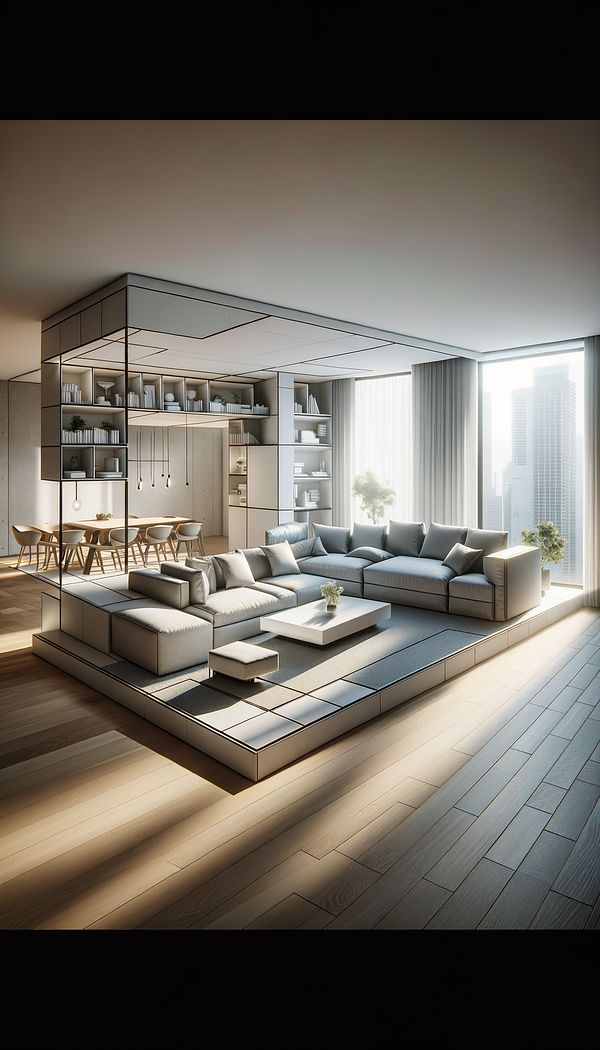What is Adaptable?
Adaptable in interior design refers to spaces, furniture, and fixtures that can easily be modified to accommodate changing needs or preferences.
Description
In the context of interior design, 'adaptable' is a principle that emphasizes flexibility and modifiability within spaces and objects. This concept is particularly important as it supports the evolving needs of users and the dynamic nature of how we interact with our environments. An adaptable design approach considers future changes, whether due to growing families, technological advancements, or shifting workplace dynamics, thus ensuring spaces remain functional and relevant over time.
Adaptable design goes beyond mere functionality; it also encompasses aesthetics, ensuring that modifications or transformations do not compromise the visual appeal or coherence of a space. This involves careful planning and foresight in the selection of materials, furniture, and layout configurations that can evolve with minimal effort. Additionally, adaptability overlaps with sustainability, as designs that can endure and transform reduce the need for frequent renovations or replacements, contributing to more eco-friendly spaces.
Ultimately, adaptable interior design fosters environments that are not only physically flexible but also emotionally resonant, as they reflect and accommodate the individual’s changing lifestyle and preferences. This creates spaces that are truly personalized and can grow along with their occupants.
Usage
In an office setting, an adaptable design might involve movable partitions that allow for the space to shift from individual workstations to a collaborative meeting area. In a residential context, it could mean choosing furniture that serves multiple functions or installing smart home technology that adjusts the environment based on time of day or season, demonstrating the practical implementation of adaptability in various spaces.
FAQs
-
Why is adaptable design important in interior design?
Adaptable design is important as it allows spaces to easily accommodate changing needs, preferences, and technological advancements without the need for significant renovations. This approach ensures spaces remain functional, sustainable, and personalized over time.
-
How can interior design be made more adaptable?
Interior design can be made more adaptable through the use of modular furniture, multi-functional spaces, easily changeable decor elements, and the incorporation of technology that allows for easy updates.
-
What are some examples of adaptable features in interior design?
Some examples of adaptable features include modular sofas, height-adjustable tables, removable wall partitions, and smart home technologies that adapt to different scenarios or preferences.
Practical Application
To implement adaptability in interior design, focus on selecting modular furniture pieces that can be reconfigured or expanded, incorporate multi-functional spaces that serve various purposes, and choose fixtures that allow for easy changes, such as adjustable lighting systems. Also, prioritize the use of durable and versatile materials that can withstand changes in usage or aesthetics over time.
-
Furniture Types599 articles
-
Construction & Building86 articles
-
Sustainability & Eco-Friendly Design69 articles
-
Space Planning & Layout134 articles
-
Decorating Principles & Elements330 articles
-
Attached Back PillowAn attached back pillow is a cushion that is permanently affixed to a piece of furniture.
-
Cast Iron FurnitureCast iron furniture refers to items of furniture made primarily from cast iron, a type of iron that has been melted, poured into molds, and allowed to solidify.
-
DavenportA small, upholstered sofa, often convertible into a bed.
-
Neo-ClassicNeo-Classic is a design style that draws inspiration from ancient Greek and Roman architecture and interiors.
-
Bishop’s SleeveA type of curtain design that resembles the flowing sleeves of a bishop's robe.
